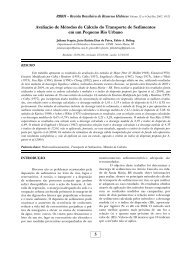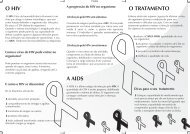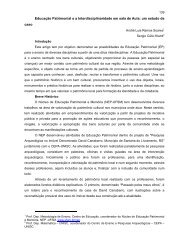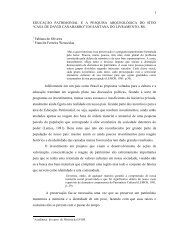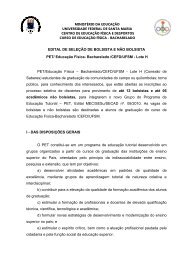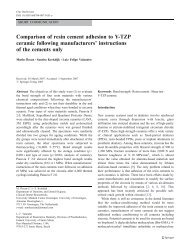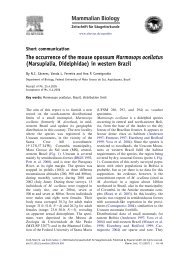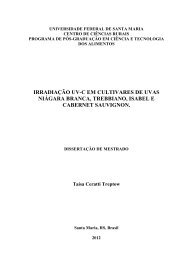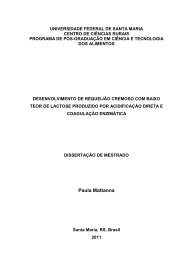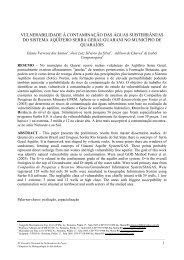DESENVOLVIMENTO E CARACTERIZAÇÃO FÃSICO ... - UFSM
DESENVOLVIMENTO E CARACTERIZAÇÃO FÃSICO ... - UFSM
DESENVOLVIMENTO E CARACTERIZAÇÃO FÃSICO ... - UFSM
Create successful ePaper yourself
Turn your PDF publications into a flip-book with our unique Google optimized e-Paper software.
56<br />
Vinifications were carried out, in duplicate, in 5 liters flasks and the fermentation was<br />
monitored by the daily measurement of Brix value and temperature. The fermentation was<br />
considered complete when the Brix level was stable. For the clarification step was used bentonite<br />
(300 mg/l) prepared according to Daudt and Durante (1986), facilitating the sedimentation of nonfermentable<br />
solids. After the clarification step the wines were stored in glass bottles (237 ml) under<br />
the temperature of 6 °C until analysis.<br />
2.2 General composition of jelly palm pulp and wine<br />
Alcohol, pH, total acidity (as tartaric acid), volatile acid (such as acetic acid) were<br />
performed in wines (Amerine and Ough, 1988). The Brix value, total acidity, pH and reducing<br />
sugar were determined in the jelly palm pulp (AOAC, 2005).<br />
2.3 Analisys of the major volatile compounds<br />
The major volatile compounds were extracted by a static headspace procedure according to<br />
Bernardi et al., (2013). For the extraction, 10 ml of jelly palm wine were transferred to a 20 ml<br />
glass vial added to 3 g of NaCl and 30 µl of 3-octanol (822.2 mg/l internal standard). Headspace<br />
sampling temperature of 50 °C and equilibrium time of 30 min were applied under continuous<br />
stirring (500 rpm).<br />
The analysis of the volatile compounds was conducted using a Varian 3400 Star gas<br />
chromatograph (Palo Alto, CA, USA) equipped with a split/splitless injector and a flame ionization<br />
detector (GC-FID). A ZB-WAX capillary column (30 m × 0.25 mm × 0.25 μm film thickness)<br />
(Phenomenex, CA, USA) was used. The temperature of the injector and detector was set to 230<br />
and 250 °C respectively. The oven temperature was held at 35 °C for 2 min and raised to 80 °C at<br />
2 °C/min, then programmed to run to 150 °C at 4 °C/min and raised to 200 °C at 30 °C/min<br />
remaining for 5 min. Carrier gas was hydrogen at an initial flow rate of 2 ml/min (constant pressure<br />
of 15 psi). Quantification was conducted with an external calibration curve constructed using the<br />
internal standard to correct analyte losses, as described by Bernardi et al., (2013).<br />
2.4 Analysis of the minor volatile compounds



